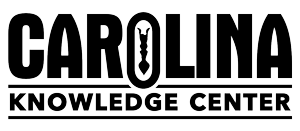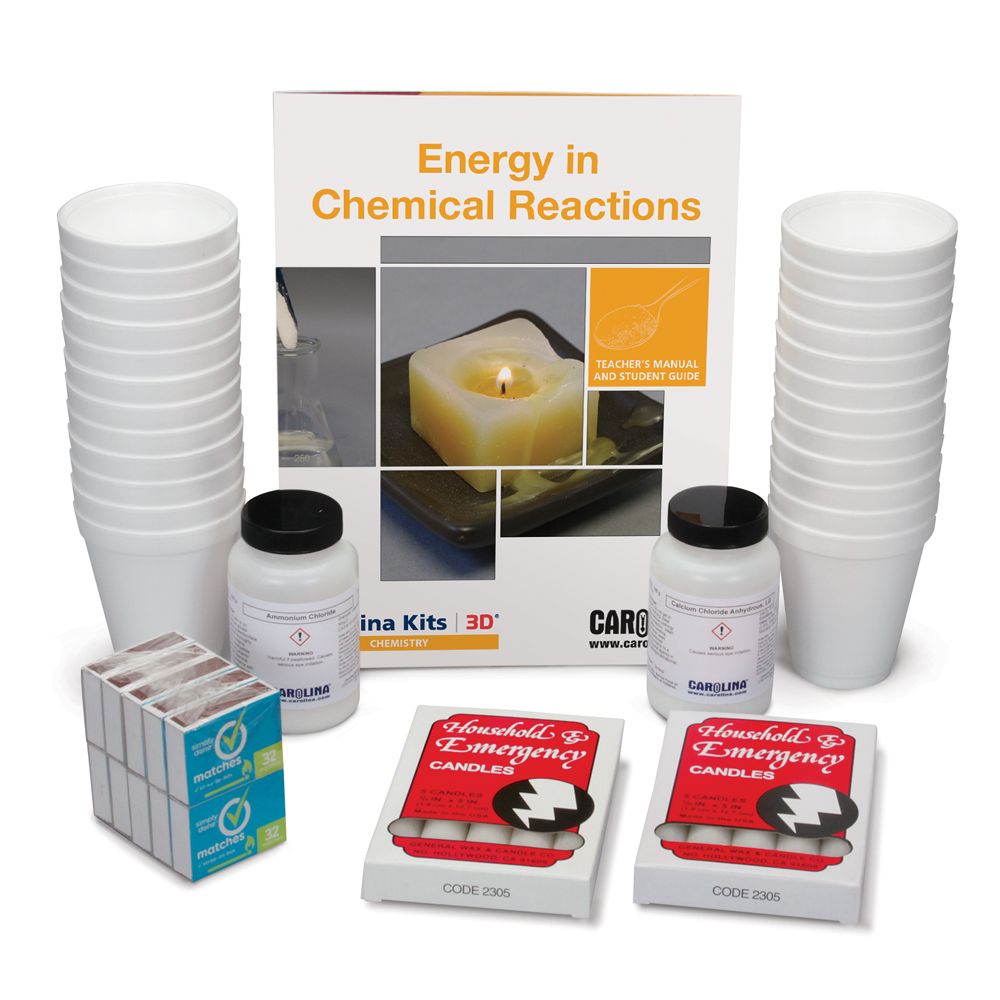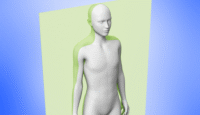A Model for Heat Capacity of Metals
A Carolina EssentialsTM Activity

Total Time: 60-70 mins
Prep: 15 mins | Activity: 45-55 mins

Physical Science | Chemistry
9-12
High School
Overview
This simple activity models how kinetic energy is transformed into heat or thermal energy on the particle level. Additionally, by comparing data for 3 different metals—aluminum, copper, and lead—students construct a model of heat capacity on the particle level. The data collected can also be used to introduce calculations of heat absorbed or heat lost (Q = mCΔT).
Phenomenon
Relate heat to motion in a very simple demonstration. Ask students to quickly rub their hands together for 20 to 30 seconds. On the macroscopic scale, ask them to discuss what happened and why. Then ask if they think the same phenomenon may apply on the microscopic scale.
Essential Question
How can the thermal energy be accounted for by particle motion?
Activity Objectives
- Relate changes in particle motion (kinetic energy) to changes in temperature.
- Construct a model of how mass, substance, and particle motion influence thermal energy transfer.
Next Generation Science Standards* (NGSS)
PE HS-PS3-2. Develop and use models to illustrate that energy at the macroscopic scale can be accounted for as a combination of energy associated with the motions of particles (objects) and energy associated with the relative positions of particles (objects).
SCIENCE & ENGINEERING PRACTICES
Developing and Using Models
- Develop and use a model based on evidence to illustrate the relationships between systems or between components of a system.
DISCIPLINARY CORE IDEA
PS3.A: Definitions of Energy
- At the macroscopic scale, energy manifests itself in multiple ways, such as motion, sound, light, and thermal energy.
- These relationships are better understood at the microscopic scale, at which all of the different manifestations of energy can be modeled as a combination of energy associated with the motion of particles and energy associated with the configuration (relative position) of particles.
CROSSCUTTING CONCEPTS
Energy and Matter
- Energy cannot be created or destroyed— it only moves between one place and another place, between objects and/or fields, or between systems.
Materials
Safety and Disposal
Ensure that caps are on the vials tightly. Remind students that the vials are glass and will break if dropped. Never use a thermometer to stir.
Procedures
If class time is short, you may prepare the vials ahead of time with the vial weight and shot weight recorded on the vial. Have students return the vials to a central station. The shot may be returned to storage, or you can store the vials for future classes. No disposal is necessary.
STUDENT PROCEDURES
- Mass the empty vial with the cap and record the mass.
- Fill the vial ⅔ full of the first metal your teacher assigned to you.
- Cap the vial and mass the vial, cap, and metal.
- Take the temperature of the metal shot in the vial.
- Make sure the cap is on securely and vigorously shake the vial for 5 minutes.
- Immediately take the temperature of the metal shot again.
- Return the shot to the container designated by your teacher.
- Repeat the procedure for the other two metals.
- Add the group data to the class data table
TEACHER PREPARATION AND TIPS
- Make sure students are massing the cap and the vial.
- Rotate the metals among groups so ⅓ of students start with aluminum, ⅓ start with copper, and ⅓ start with lead.
- A predetermined mass is not required as students will be working with averages for each metal.
- Digital thermometers work well and typically measure to the tenths place which is helpful in this activity.
- Remind students to take the temperature of the shot, not the glass vial. The bulb or tip of the thermometer should be in the shot but not touching the bottom of the vial.
- Have a “Used” container for each type of metal. Students should not reuse a sample as they may still be at an elevated temperature. Ideally, starting temperatures for the metals should be at room temperature.
Data and Observations
Class Data

Analysis & Discussion
How is shaking the vial like rubbing your hands together?
In both cases particles are moving, colliding, and transferring energy. In both cases the temperature went up.
On the particle level, what made the temperature of the metal shot change?
Shaking the vial transferred kinetic energy to the shot in the vial. Increase in kinetic energy means an increase in temperature.
Everyone shook the metal for the same amount of time. What factors or variables may be affecting the temperature change of the metal? Justify your answer with the class data.
Other factors may include how hard the vial was shaken, if the student stopped shaking during the 5 minutes, the type of metal in the vial, the total mass of metal in the vial.
Using class data, calculate the average mass of the three metals. Compare the average masses.
Student answers will vary.
Using class data, calculate the average temperature change for the three metals.
Student answers will vary.
Are the average temperature changes the same for the three metals? Use data to support your answer. How can this be explained?
Average temperature changes should be slightly different for the three metals. Aluminum has the highest heat capacity, so you would expect it to have the smallest temperature change. Lead has the smallest heat capacity, so it should have the greatest temperature change.
Based on your data and calculations, construct a model that explains the phenomenon of heat capacity, what variables affect the amounts of energy needed to change a substances temperature one degree Celsius.
The model should include mass, temperature change, and the substance. Students may not know to multiply the 3 variables together but that can be discussed.
How do the variables in your model compare to the formula for heat calculations?
Q(J) = m(g) x C(J/g-K) x ΔT(K)The variables should be the same.
Use the average temperature change and average mass to calculate heat for each metal. Explain any differences in thermal energy among the metals.
Student answers will vary. Check to be certain the final answer is in Joules, the SI unit of energy. Conversion to Kelvin from Celsius is not necessary since calculations are based on changes in temperature. Students should notice that aluminum stores more heat energy before its temperature increases. Lead is just the opposite, it changes temperature with a small amount of energy input.
SHOP THE KIT
RELATED PRODUCTS
VIEW MORE ESSENTIALS
*Next Generation Science Standards® is a registered trademark of Achieve. Neither Achieve nor the lead states and partners that developed the Next Generation Science Standards were involved in the production of, and do not endorse, these products.




